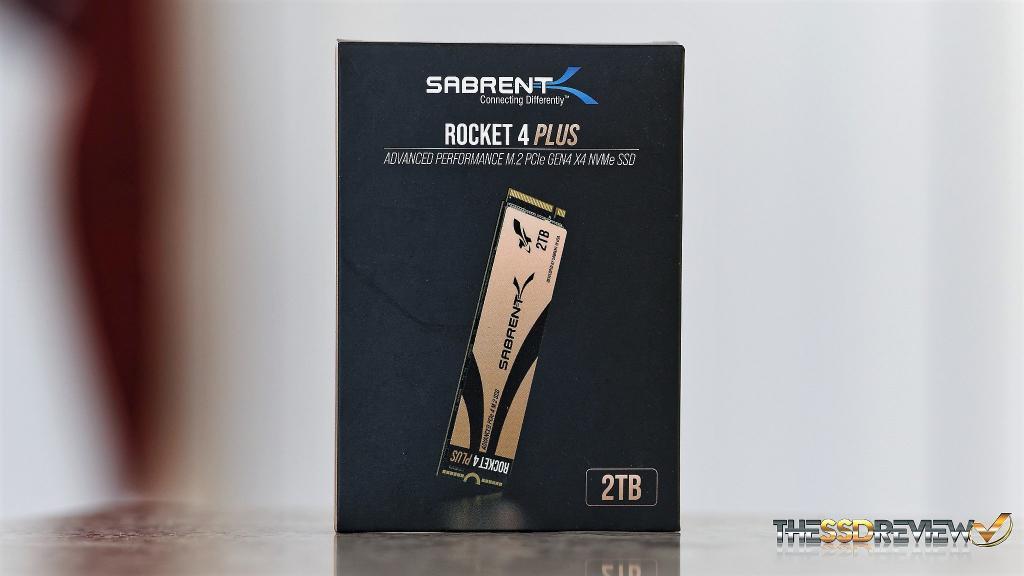Gen 4 SSDs have been available for just over a year now and the two most talked about characteristics just happen to speak to the good and the bad. The good of course has had us watching storage speeds jumping from 3.5GB/s to 5GB/s and now 7GB/s becoming the norm. The bad is the fact that Gen 4 necessitated additional cooling solutions as those high transfer speeds were accompanied by very high SSD temperatures.
In fact, just over a month ago we posted a preview of the newest Phison PS5018-E18 8-channel NVMe controller, the same controller that is in our Sabrent Rocket 4 Plus NVMe SSD report today. That report validated that this would be one of the worlds fastest SSDs to hit retail sales. Regardless, the heat of high data transfer speeds still necessitated additional cooling measures. There still isn’t a manufacturer out there that would dare suggest anyone try their product without additional cooling solutions in place. Wait a minute though… Could the Sabrent Rocket 4 Plus NVMe SSD be the fastest and coolest SSD available today?
Let’s start with the packaging because first impressions are everything and, well, Sabrent has that locked up with any and all of their flash products. The Sabrent Rocket 4 Plus comes in a straight forward compact cardboard exterior package that contains a brushed gold aluminum two piece clam shell type case inside. The colour scheme for the Rocket NVMe SSD is black and gold.
Our review today will look at both the one and two terabyte versions of the Rocket 4 Plus. There will also be a 4TB version released in Q1 2021. Watch Amazon as it will be listed there.
Inside the gold aluminum case is the Sabrent Rocket 4 Plus NVMe M.2 SSD set into foam for protection of the SSD, along with the Installation Guide. Available totally free of charge for new Sabrent Rocket owners is the Sabrent Rocket Control Panel (DL Link) as well as a full version of Acronis True Image (DL Link) software for your disk migration.
The Sabrent Rocket 4 Plus SSD is a PCIe 4.0 (Gen 4) NVMe SSD of the 2280 (80mm) M.2 form factor. Its branding consists of a gold and black metal heatsink on top of the SSD that cannot be removed and replaced in the same fashion. If something were to go wrong with your SSD and you returned it like this above example, Sabrent would deny the claim as it should look nice and smooth like this 1TB example below:
The Sabrent Rocket 4 Plus relies on the latest NVMe 1.4 protocol, has variable performance specs and has a five year warranty if registered within 90 days of purchase. Failing to do so leaves the user with a basic one-year limited warranty. Performance is listed at 7100MB/s read and 6600MB/s write with up to 650K read and 700K write IOPS for the 2TB version and this drops to 7100MB/s read and 5300MB/s write with up to 350K read and 700K write IOPS for the 1TB version. For our review, we removed the branding on both the front and back in order to give you a first hand look at the components on the 2TB version of this SSD.
Looking at the PCB (printed circuit board) of the Sabrent Rocket 4 Plus, we see that it contains the latest Phison PS5018-E18 8-chennel NVMe SSD controller on its face, along with four pieces of Micron B27B 96-layer 3D TLC NAND flash memory and 1 piece of SKHynix DDR4 DRAM buffer memory.
Each package of NAND represents 256GB RAW storage and the total memory available to the user once formatted is 1863GB. The Rocket 4 Plus is also rated at 700TBW for the 1TB and 1400TBW for the 2TB capacity.

Checking Amazon, we see the Sabrent Rocket 4 Plus NVMe SSD as being available and priced at $199.99 for th1 1TB capacity and $399.99 for the 2TB, both being tested in this report.
 The SSD Review The Worlds Dedicated SSD Education and Review Resource |
The SSD Review The Worlds Dedicated SSD Education and Review Resource | 

Ha, thanks auto fill.
It would be nice to see sustained tests for SSDs to see how fast it is once the cache runs out and then how fast it is once it has to actually write to TLC. I have an older pci3 Sabrent than goes from 1,000MBs to 80MBs after 50GB. Makes copying video footage unusably slow.
@Gavin, and that’s why if you are using a desk top work station Intel’s Optane drives are the best way to go, they don’t suffer from those issues.
I agree with Gavin Greenwalt that the twoost important SSD test is temperature and sustain transfer speed when the cache is full and depends on raw speed.
Please consider this for future review.
Why this one is fastest than the WD SN850 ? That test copying files was embarrassing the SN850 destroyed all of them
yeah i also don’t get it, i prefer the WD SN850 for that copying result, and everything else also just as fast